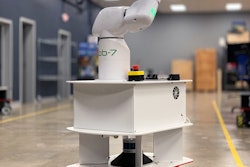
Employment rate is a highly discussed topic during the Coronavirus (COVID-19) pandemic in the supply chain and beyond. And, prior to the pandemic, a labor shortage throughout the supply took hold. Today, consumers look for essential industries for secure jobs after the shut down revealed how fragile employment can be. So many are flocking to the supply chain.
But how do we onboard new employees in the supply chain when we need to stay physically and socially distance? The answer is technology.
“Since COVID, employers and employees have had to rely on one or more virtual platforms to do work they couldn’t do in person,” says Roxi Bahar Hewertson, chief executive officer of Highland Consulting Group, Inc. “After COVID eases, virtual working, particularly in offices of all kinds, will likely continue to utilize virtual work environments - a big challenge for recruitment, onboarding and retention. However, there is no reason why a virtual on boarding program can’t be just as powerful and welcoming as in person. In fact, access to more people in more places has become far easier and common place. My recommendation is to design a rigorous onboarding program and then adapt it to a virtual environment wherever it makes sense and is possible.”
The supply chain focuses on using labor management systems (LMS) and other digital training tools to help new hires gain the necessary skills in an efficient manner, according to Dan Johnston, founder and CEO of WorkStep. He also explains that retention management systems also help employees feel heard and reduce high turnover rates.
This type of technology is helpful with or without COVID-19, but unfortunately the pandemic has challenged things.
“COVID has changed the way supply chain workers view safety,” Johnston says. “Last September, WorkStep conducted a study around COVID-19 and the flight risk of the supply chain workforce and found that 70 percent of frontline workers said they feel their safety and their family's financial security are in conflict. That's why many employers are prioritizing employee feedback to help adjust for workforce concerns.”
The technologies put in place during the pandemic regarding onboarding employees will likely remain once the pandemic subsides.
“As companies embrace technology to replace analog systems for onboarding (for example, mobile check-ins vs. in-person feedback), those changes will be here to stay because, even when the ability to onboard remotely becomes less critical, the efficiency gains will remain,” Johnston adds.
The most important factor in onboarding employees in the supply chain regardless of a pandemic is ensuring the individual is a right fit for company right off the bat as well as vice versa as well as taking the time out to properly train them. Some companies may throw employees in immediately and hope they catch on, but this can prove detrimental in the long run.
“Most companies do little to proactively onboard staff in normal times and it’s far worse during COVID,’ says Bahar Hewerston. “In fact, a Leadership IQ study noted that 46% of new hires fail within the first 18 months as high as 81% fail because of a poor cultural fit. Companies that excel at on boarding and high retention experience 2.5 times the revenue growth and nearly 2x the profit margin than companies who do a poor job with onboarding.”
It is likely more individuals will flock to the supply chain in hopes of working in an essential industry. The supply chain, while it has its gaps, remains resilient and using these new tools and best practices will help ensure a smooth start to a new wave of employees as we all continue to adjust to life in the new normal.




















